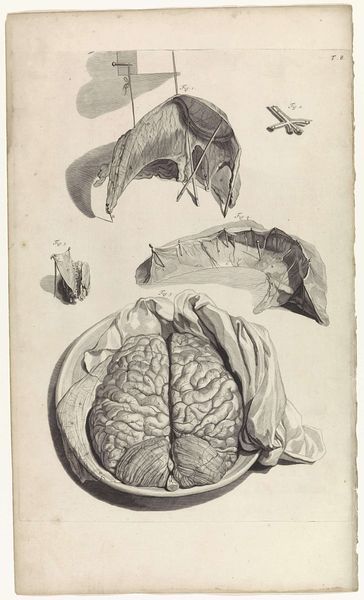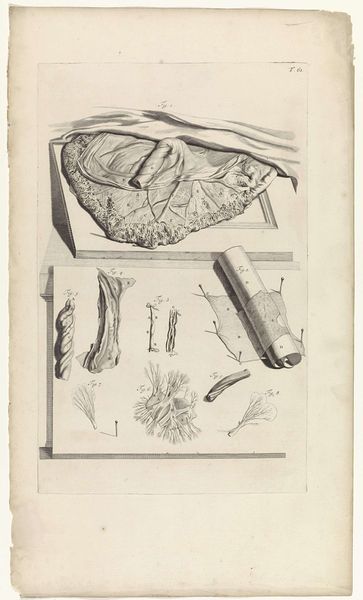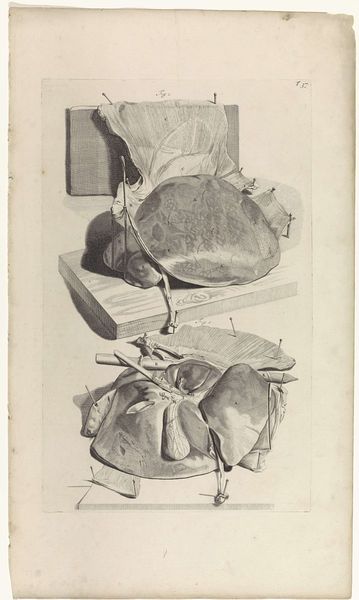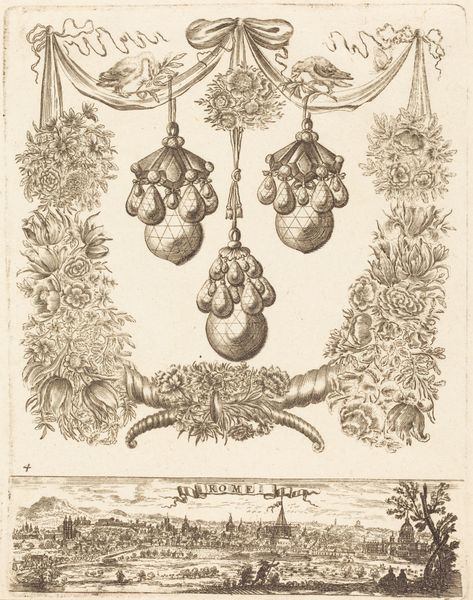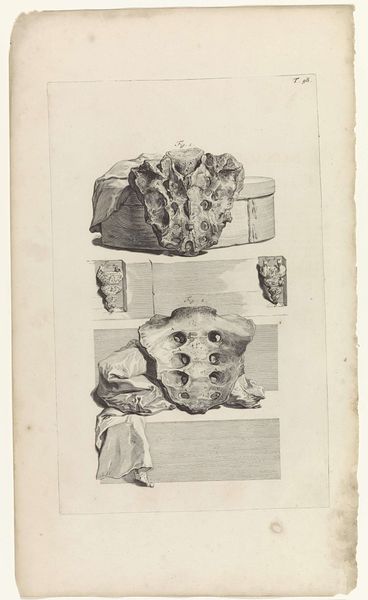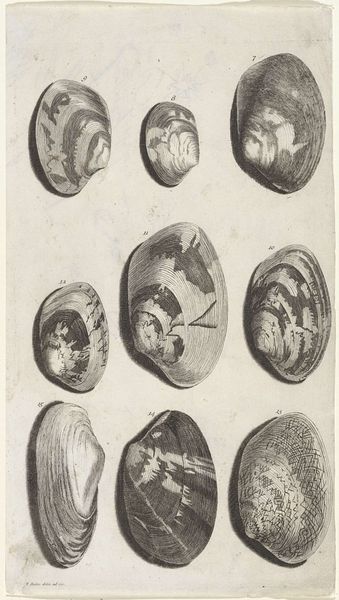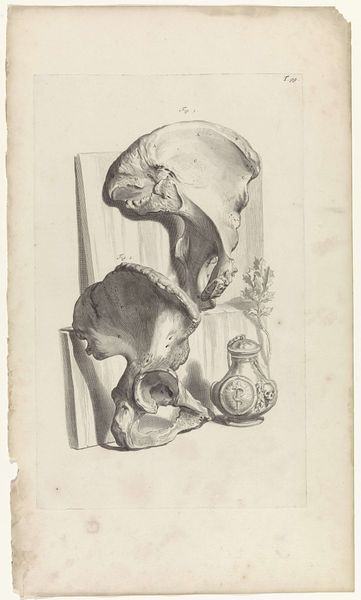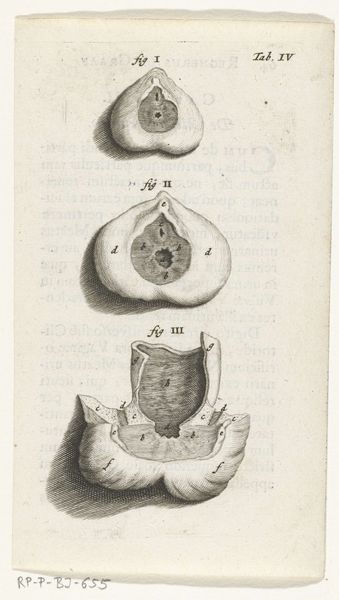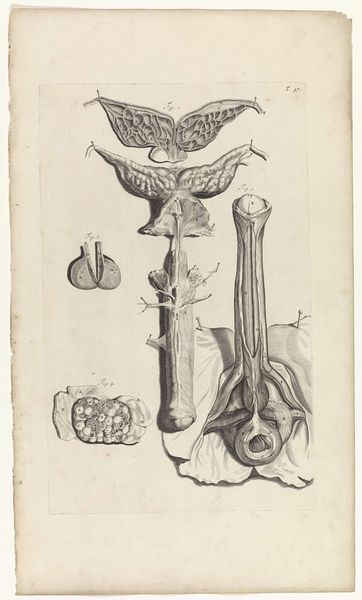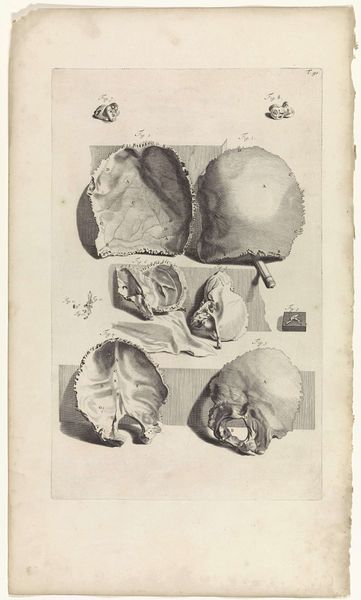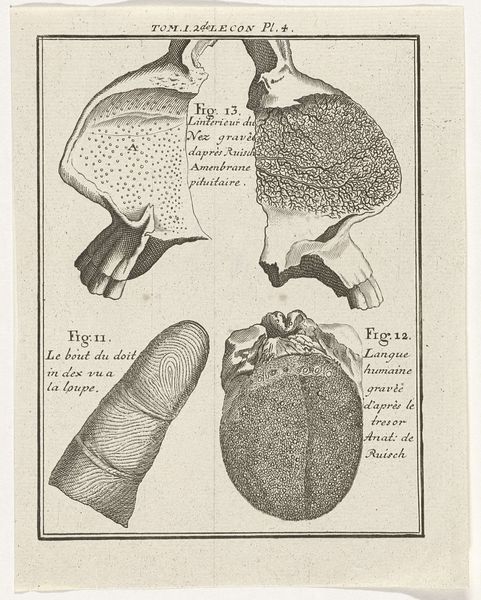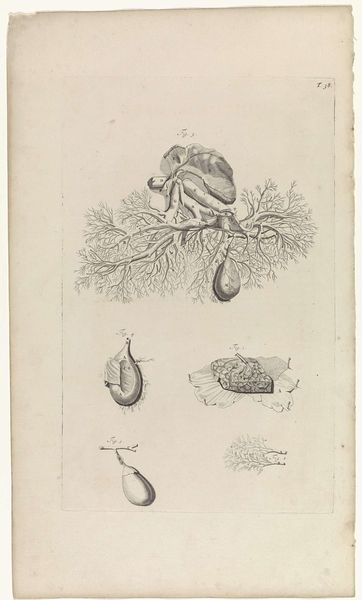
print, graphite, engraving
# print
#
graphite
#
history-painting
#
academic-art
#
engraving
#
realism
Dimensions: width 276 mm, height 441 mm
Copyright: Rijks Museum: Open Domain
Editor: This is "Anatomische studie van het hart," or Anatomical Study of the Heart, from 1685 by Pieter van Gunst. It’s an engraving with graphite. The image is very detailed, and somewhat unsettling! What's striking is how objectively the heart is depicted. What do you see in this piece beyond the literal depiction of a heart? Curator: It's unsettling precisely because it’s an objectification. Think about the Enlightenment context; science sought to dissect, literally and figuratively, the natural world to understand and control it. This image isn't just about anatomical accuracy; it speaks to a shift in how humans perceived themselves and their bodies – a move away from the heart as a symbol of emotion and spirituality, towards seeing it as a mechanical object, part of a larger system. How might this relate to social power structures? Editor: Well, if we understand the body as a machine, doesn’t that create space for people in power, typically white men during the Enlightenment, to exert control over other people’s bodies, particularly those of women, enslaved people, and the poor? It dehumanizes those who are already marginalized. Curator: Precisely! And consider how this pursuit of "objective" knowledge was often funded by, and served the interests of, colonialism and the exploitation of resources and people. The detachment seen in this engraving, this clinical view, isn’t neutral. It has real-world consequences when applied to social relations and the treatment of different groups. It is a tool used for marginalization. Editor: So, seeing this image now invites us to question what “objectivity” really means and whose interests it serves? It’s not just a historical artifact, but a mirror reflecting the complex relationship between power, knowledge, and representation. Curator: Exactly. We can ask how the lingering effects of these historical perspectives continue to impact how we understand identity, medicine, and even social justice today. Editor: That gives me a lot to consider about the supposed neutrality of science and its entanglement with power structures. Thank you.
Comments
No comments
Be the first to comment and join the conversation on the ultimate creative platform.
